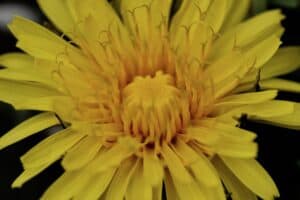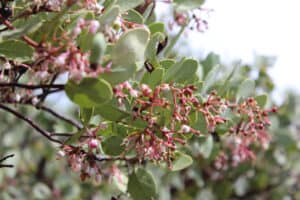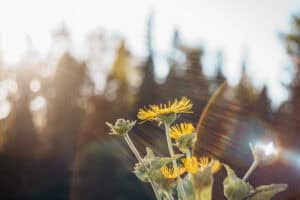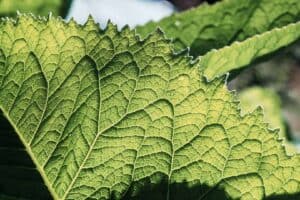When you hear Echinacea, chances are you think of its immune-boosting properties. But did you know that this popular use is relatively new? Traditionally, Echinacea was used for entirely different reasons.
By rediscovering its original applications, we can break free from the idea that Echinacea is just a “cough, cold and flu” herb and appreciate the many ways it supports the body holistically.
In today’s blog post, you’ll learn:
- What makes Echinacea’s flavor so unique and why it creates that signature tingling sensation
- The best time to use Echinacea when you’re feeling sick
- How Echinacea can be used for venomous snake bites and stings
- Why Echinacea is considered the quintessential Mars plant in medical astrology
- Why its combination of cooling and pungent energetics is so rare
Table of Contents
Echinacea is probably one of the most famous herbs in the world. Even people who know nothing about herbs have likely heard someone say, “Take Echinacea for a cold.”
This herb has earned its place in the spotlight of herbalism with impressive healing properties. While Echinacea is well-known today for supporting the immune system, that’s a fairly modern use. For centuries, it was used for very different purposes. It’s time we shine a light on this powerful herb because Echinacea does so much more than just boost the immune system.
Although research has highlighted Echinacea’s immune-boosting effects, we shouldn’t pigeonhole it as just the immune herb for coughs, colds and flus. Indeed, the medicinal power of Echinacea on immunity and other key organ systems goes far beyond that.
Let’s take a closer look at how Echinacea was traditionally used and how it’s applied today. By comparing its past and present uses, we can gain a deeper understanding of this plant’s holistic benefits.
Common name: Echinacea
Latin name: Echinacea purpurea and Echinacea angustifolia
Family: Asteraceae
Tastes: Pungent, Diffusive/Acrid
Affinities: Blood and Vasculature, Immune System (specific and nonspecific immunity), Lymphatic System, Mucosa
Actions: Immune Stimulant, Lymphagogue Alterative, Antiseptic, Circulatory Stimulant, Sialagogue
Energetics: Cooling, Stimulant, Neutral to Drying
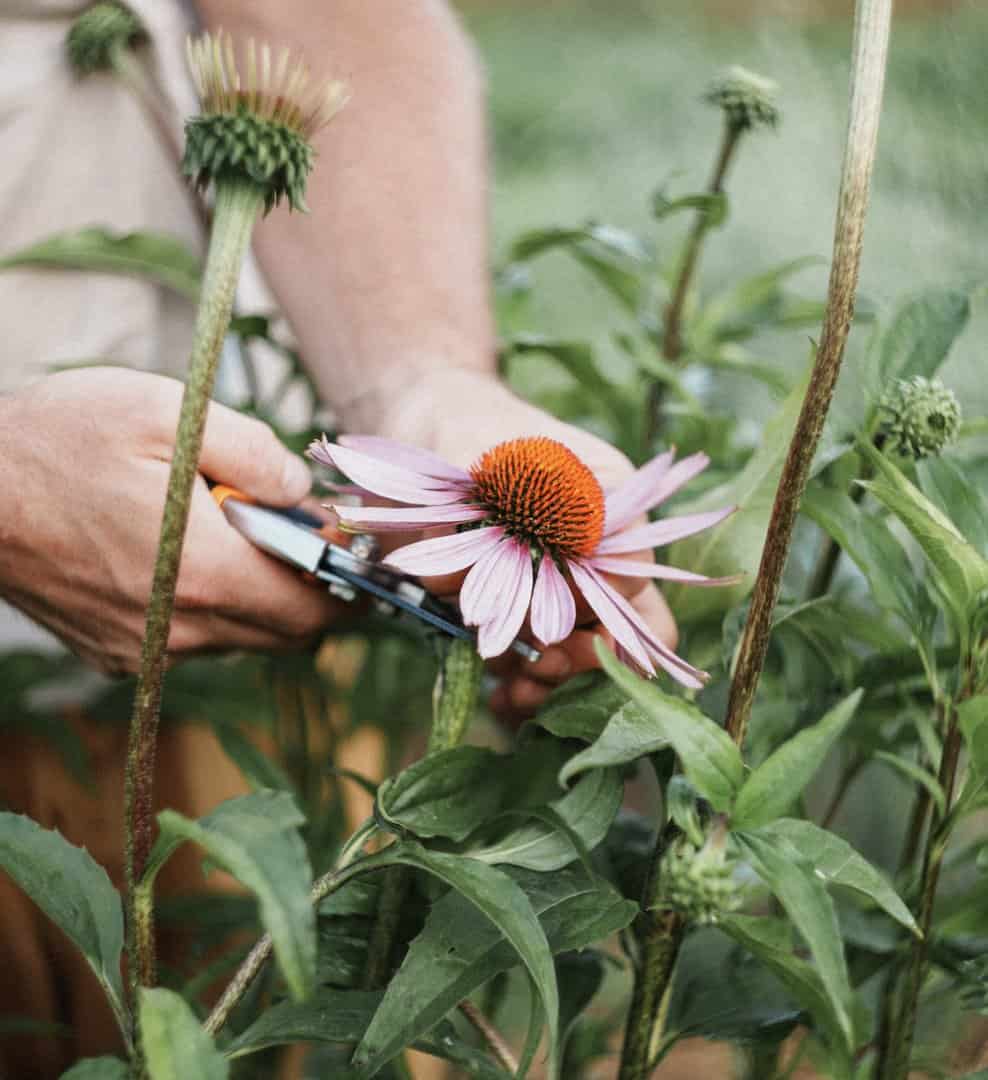
Taste
Anyone who’s tried Echinacea knows it has a distinct, active flavor. Pungent and diffusive, Echinacea creates more of a mouth sensation than an actual taste. Its pungency and diffusive nature stimulate the senses, taste buds, and salivary glands, creating a strong tingling sensation on your tongue and mouth. This tingling is tied to its action as a sialagogue, meaning it increases saliva production. The combination of taste and mouth feel also yields a degree of acridity.
Diffusive plants often affect the circulatory and cardiovascular systems by promoting blood flow and circulation. Echinacea is no exception, as it stimulates blood flow to the surface.
Affinities
Echinacea’s main affinity lies with the blood and circulation, which is how it was historically used. Its other key affinity is the immune system. Echinacea has been extensively studied for its ability to activate local and systemic immunity, stimulate T-cell responses, activate macrophages, and boost B cells. Essentially, all aspects of the immune system are activated by taking Echinacea. This is why it’s often recommended today for the onset of sickness—whether for infection, cough, cold, or flu. There’s also plenty of research supporting its use for respiratory conditions like bronchitis and coughs (some of which is positive and others are negative).
Another critical but often overlooked system that Echinacea benefits is the lymphatic system, and it’s especially effective for reducing lymphatic swelling. The lymphatic system’s role is to cleanse the blood of metabolic wastes, purifying the blood. When fighting an infection, your immune system battles pathogens, leaving behind dead bacteria or viral cells, immunological components and other metabolic wastes, which the lymphatic system filters and cleans.
However, when there’s too much metabolic waste, the lymph can become overburdened, especially since it doesn’t have its own pump and relies on body movement to flow. When you’re sick and lying in bed, the lack of movement can overwhelm the lymphatic system, leading to swollen lymph nodes under the neck, armpits, or inguinal region.
Though it’s not an official affinity, Echinacea can also be highly beneficial for the skin when used topically for venomous stings and bites from insects and snakes.
Actions
As mentioned, Echinacea is a supreme immune stimulant, activating all aspects of the immune system, making it helpful for various infections. Because Echinacea is so versatile, you can pair it with different herbs to target specific organ systems. For example, combining it with respiratory herbs like Osha (Ligusticum spp.), Lomatium (Lomatium dissectum), and Elecampane (Inula helenium) will stimulate immunity in the lungs. Alternatively, you can combine it with Uva Ursi (Arctostaphylos uva-ursi), Buchu (Agathosma), and Pipsissewa (Chimaphila umbellata) to direct its action toward the urinary tract. Pairing it with Oregon Grape (Mahonia aquifolium), Wormwood (Artemisia absinthium), or Goldenseal (Hydrastis canadensis) can target the intestines. Essentially, you can tailor which organ system it acts on most, but its primary affinity is still the immune system. If you want to take it to boost your immunity, Echinacea is most effective when you take it at the first signs of illness.
While Echinacea can be helpful, rest is still the most effective remedy for the common cold. Unfortunately, people often take Echinacea when they start feeling sick but don’t slow down to pair it with rest. This leads them to take frequent doses of Echinacea while continuing to push themselves at full force, which overstimulates and depletes the vital reserves further. I see Echinacea misused this way often, so it’s important to keep a holistic perspective in mind when using it to support your immune system.
Even though it’s often pigeonholed as an immune herb, it’s important to remember Echinacea’s traditional uses. In Western herbalism, it was primarily used as an alterative to purify the blood, extracellular fluids, and lymphatic system, particularly for conditions like blood poisoning, sepsis, and deep infections. It was historically considered a deep antiseptic remedy for purifying the blood during serious infections and blood poisoning.
Additionally, many First Nations peoples in the plains used Echinacea as a remedy for snake bites, drawing a symbolic connection between the flowering cone of the plant and a rattlesnake’s tail. In their traditions, it’s used for any venomous bite or sting, particularly from rattlesnakes, brown recluse spiders, black widows, or any other venomous creature. In such cases, I was taught to drink an entire one-ounce bottle of Echinacea while on the way to the hospital (at least for rattlesnake bites)—though this is NOT a replacement for seeking medical care! It should also be applied topically, combining very well with Plantain (Plantago major). This can be translated to a variety of other “bad blood” conditions, such as boils, cellulitis, erysipelas, and other skin conditions associated with heat and infection.
Echinacea is also a circulatory stimulant, though not enough to make it a diaphoretic. For that purpose, I prefer herbs like Elderflower (Sambucus) or Yarrow (Achillea millefolium) over Echinacea. Topically it not only helps to draw out poison but also is vulnerary, helping to heal the wound, prevent infection, and stimulate local immunity and circulation.
Echinacea is a versatile herb to formulate with because although it works systemically, you can direct it toward a specific organ, system, or tissue depending on the herbs you combine it with. Personally, I think it’s a must-have for any first aid kit, especially for travel.

Energetics
Echinacea has some seemingly contradictory qualities when it comes to its energetics. It’s a pungent and stimulating plant, which might make you think it’s warming or hot. However, this stimulant herb is cooling, which is a relatively rare combination. In terms of moisture, it’s relatively neutral to slightly drying, making it a cooling, drying, and stimulating herb.
This cooling effect is particularly beneficial for infections with pronounced inflammation since it purifies the lymph and blood, stimulates immunity, and cools inflamed tissues, helping to shorten the lifespan of an infection. It also has some direct antibacterial effects.
As a cooling stimulant with drying properties, Echinacea is great for reducing excess kapha and pitta. Kapha is associated with dampness, stagnation, and toxic accumulation, while pitta is linked to heat and inflammation. The cooling alterative properties of Echinacea help address both of these imbalances. I tend to think of it for damp-heat patterns.
That said, Echinacea is best used in acute situations for short periods, so it’s unlikely to cause any constitutional imbalances for any of the three doshas. It’s the herbs taken daily over a long period that require more mindfulness about their effects, but Echinacea isn’t typically used that way. In terms of its effects on the tissue states, Echinacea balances the heat/excitation tissue state with its net cooling property and cold/depression with its potent stimulating effects.
Alchemical Correspondences
Looking at Echinacea through the lens of medical astrology, it’s a prime example of a Mars plant. Mars is linked to the immune system, representing the force that drives us to act. It’s the archetype of the warrior, symbolized in our immune defense mechanisms. Physiologically, Mars governs our immune response, which protects the body from external invaders.
Mars, known as the red planet, corresponds to iron and blood. As we’ve seen, Echinacea is a powerful alterative that purifies the blood and stimulates circulation. Its taste is also very Mars-like, with its tingling, stimulating effect on the salivary glands and overall activation of the body. Morphologically, Echinacea’s lance-shaped leaves, prickly ray and disk flowers, and red-to-purple coloration all correspond to Mars, reflecting its ability to remedy blood stagnation and support the immune system. Mars also governs injury, and Echinacea is frequently used for wounds and recovery. I also consider Echinacea a Fire Element plant for many of the same reasons it’s associated with Mars.

Growing Echinacea
Echinacea is native to North America and grows in the Midwest and plains. Sadly, much of its natural prairie habitat has been destroyed. However, Echinacea purpurea relatively easy plant to cultivate. (E. angustifolia is a bit trickier, which is unfortunate considering it’s the more potent of the two species).
To grow it, gently separate the roots and replant each sprout—each rootlet can grow into a plant. It also grows well from seed, which should be planted in the fall. Seeds take about four weeks to germinate and require cold exposure, so give them plenty of time in the fall or early spring.
Both the flowers and roots of Echinacea are medicinal. The flowers are more lymphatic and sialagogue in nature, while the roots have a stronger immune action. This is how I use the different parts, though both share these actions. I find the flowers seem to work better on the periphery and the roots deeper within the system, but they ultimately have the same properties. Generally people prefer to combine a root and flower extract to represent the wholeness of the jherb. You can harvest the roots in the third or fourth year, ideally in the fall, and tincture them. If dried, cut, and ground into a powder, the roots can also be used as a poultice for stings and bites.
Echinacea is so much more than just an immune booster for the occasional cold or flu. It’s a plant with a deep-rooted history and versatile uses that extend far beyond what many people realize today. From purifying the blood and stimulating circulation to aiding in recovery from infections and venomous bites, Echinacea has earned its reputation as a true herbal powerhouse. So next time you think of reaching for Echinacea, remember that it’s not just for the sniffles. Whether you’re using it to stimulate the immune system, support the lymphatic system, or address deeper issues of blood purification, this herb has a wide range of benefits.
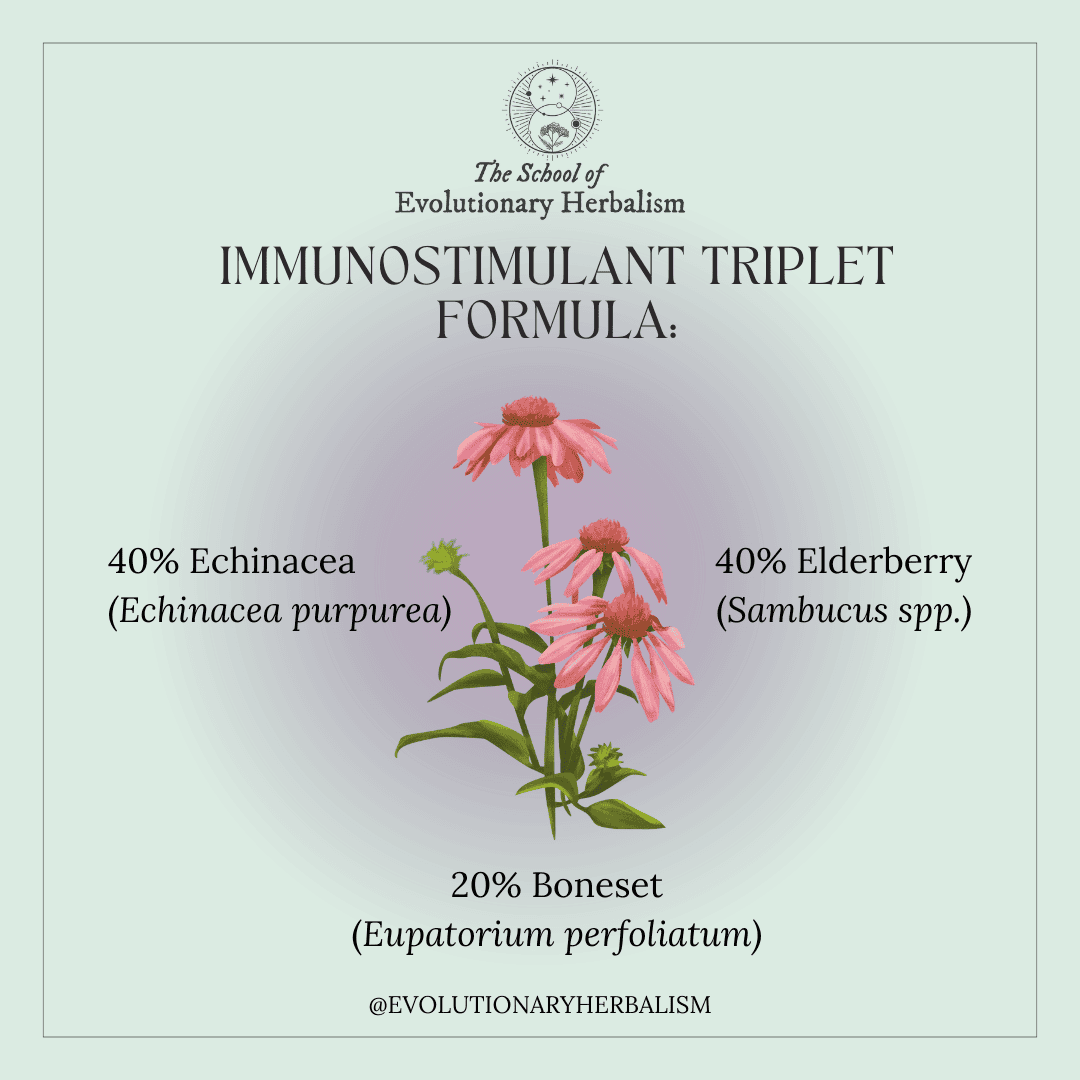
Immunostimulant Triplet
40% Echinacea (Echinacea purpurea)
40% Elderberry (Sambucus spp.)
20% Boneset (Eupatorium perfoliatum)


